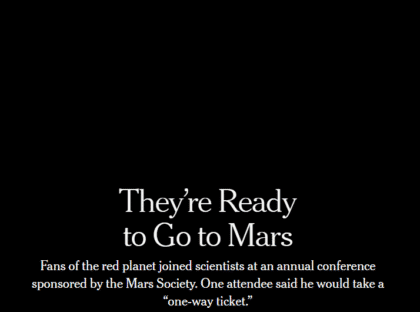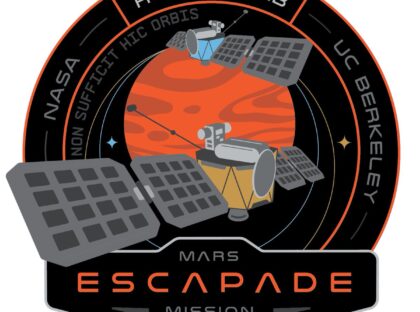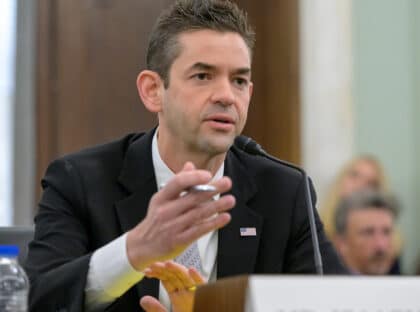
The New York Times just featured our 28th Annual International Mars Society Convention at USC in an in-depth article! From packed panels to spirited discussions, the piece captures the excitement and momentum of our recent gathering in Los Angeles.
By Alex Vadukul, New York Times, Oct. 15, 2025
On the campus of the University of Southern California, the morning sun illuminated an inflatable replica of a white space station fit for human habitation. The little sign next to it declared: “Mars: The time has come!”
Starting on Oct. 9, astronomers, robotics engineers and planetary scientists stepped past the sign on their way to a three-day convention held by the Mars Society. They were joined by high school students, sci-fi aficionados and I.T. guys — people who did not work in the space industry yet were bonded by their desire to look up at the stars and wonder: What’s out there? And: When can I go?
They sipped coffee outside a lecture hall while exchanging LinkedIn contacts and discussing which presentations they would attend, among them “Debating the Martian Constitution” and “Brewing Quality Coffee on Mars.” Souvenirs for sale included Elon Musk socks, boxers with Hubble Space Telescope images and hoodies that read “Occupy Mars.”
Marge Lipton, a 77-year-old volunteer, was managing the merch table. “I still remember the earth rumbling and how it inspired me,” said Ms. Lipton, who witnessed the launch of Apollo 15 when she was a producer for ABC News. “As a kid of the 1960s, I got the space bug and it never left me. For so many of us here, we want to know what’s across the river, what’s on the other side of the mountain.”
A fellow volunteer beside her busily assembled a Lego space rover.
“All of us want to get to Mars,” Ms. Lipton continued, “but we realize the American people have lots of other things on their minds right now. How we’ll get over this moment in America, and bring attention back to Mars, I don’t know. But at least when we’re here, we don’t have to explain ourselves to each other.”
Getting people to care about reaching the red planet has been the Mars Society’s mission since 1998, when it was founded by Dr. Robert Zubrin and a network of scientists and engineers who were disgruntled with the diminishing ambitions of the National Aeronautics and Space Administration.
Back then, the idea of a human settlement on Mars belonged to the realm of Isaac Asimov tales. Now, thanks partly to Elon Musk and his SpaceX program, it seems closer to reality, even if many members said they disagreed with Mr. Musk’s political stances.
Andy Greco, a Boeing engineer who lives in Seattle, gave a presentation about the simulated Mars habitat on Devon Island, an uninhabited Arctic outpost in Nunavut, a Canadian territory. As a leader of a research group, he spent two weeks at the isolated base, which was established by the Mars Society in 2000.
“We treat the outside of the habitat just like it’s deadly space, even waiting for the airlock to be depressurized when we exit,” Mr. Greco, 38, said after his talk. “We know we’re just practicing, but it puts us into the mind-set that we’re actually on another planet. It was the greatest adventure of my life so far, and it carried all the thrilling dangers I read about in sci-fi books as a kid.”
“I’d definitely answer the call of a one-way ticket to Mars,” he added. “For so many of us dreamers, it’s been in our imaginations for so long, that actually doing it isn’t a such reach in our minds.”
To read the full NY Times article, please click here.


